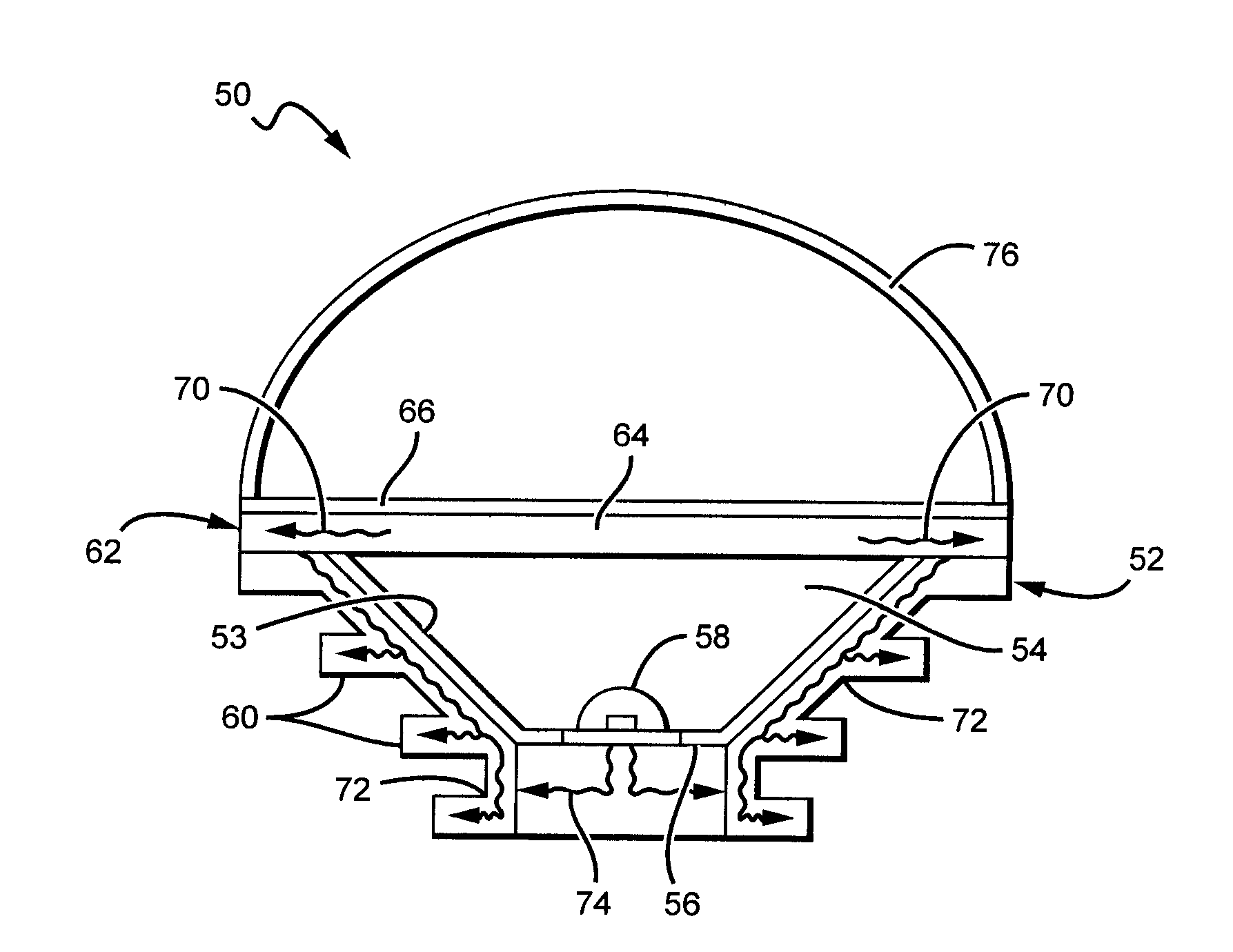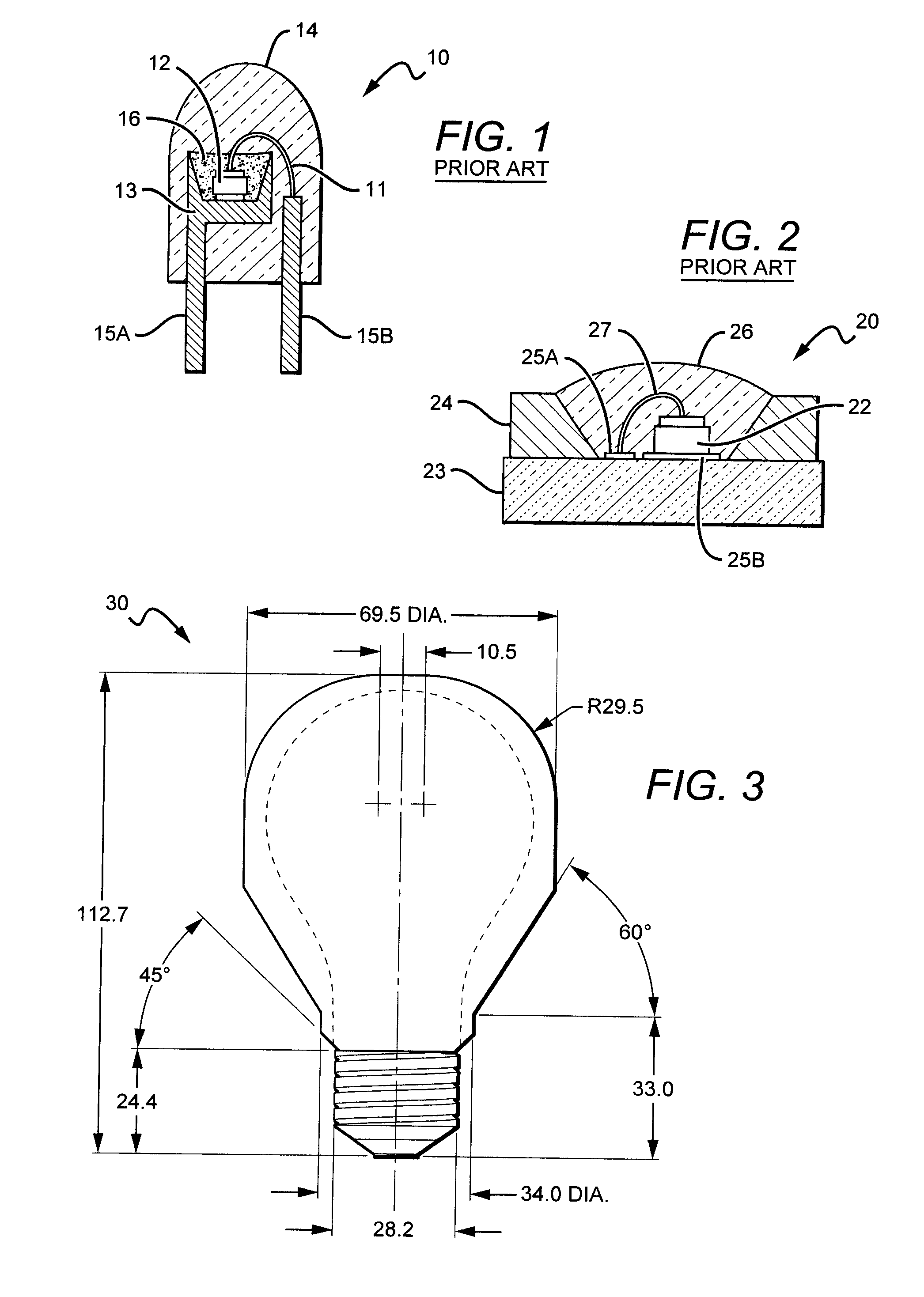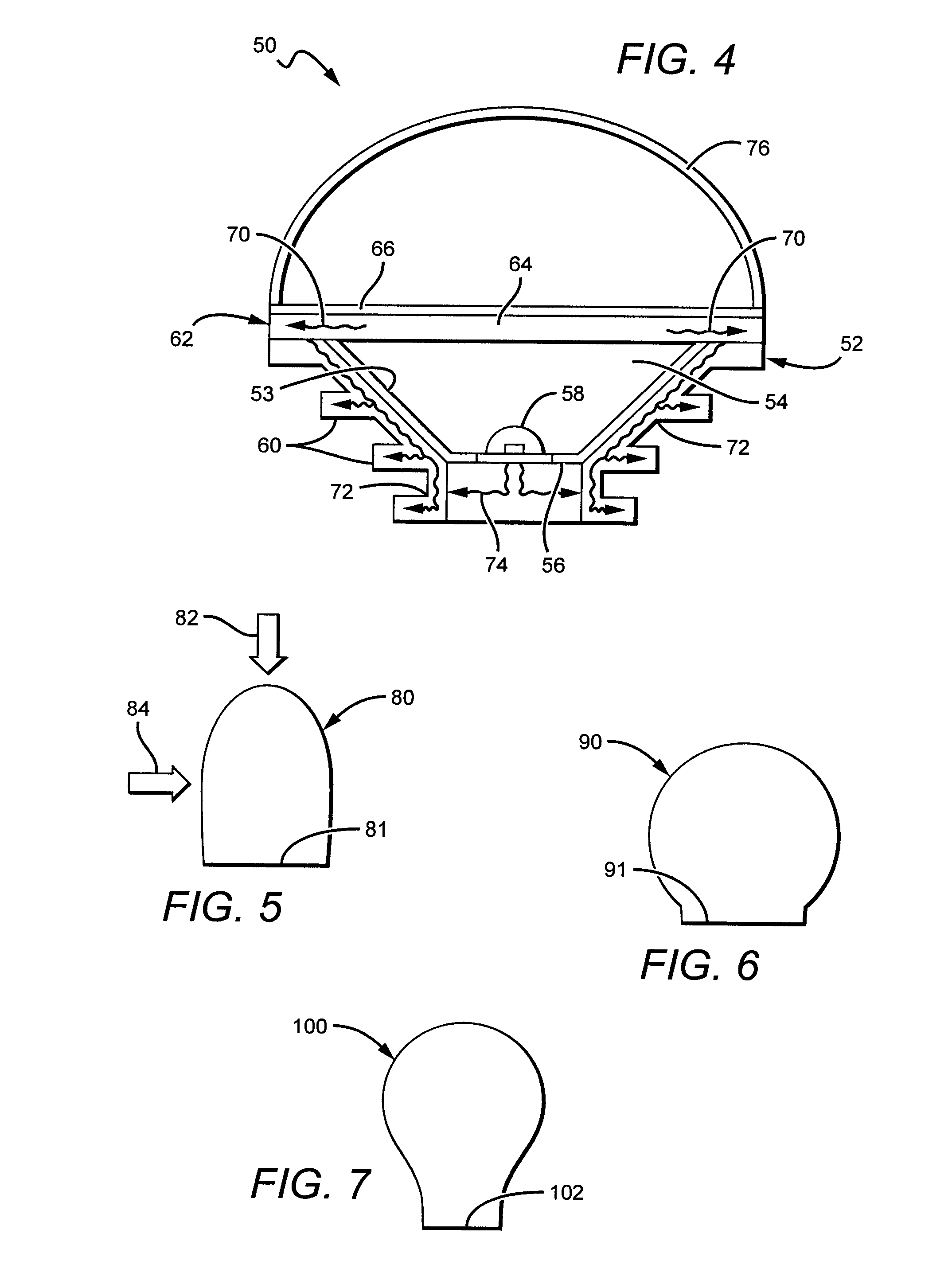However, such lamps are highly inefficient light sources, with as much as 95% of the input energy lost, primarily in the form of heat or
infrared energy.
One common alternative to incandescent lamps, so-called compact fluorescent lamps (CFLs), are more effective at converting
electricity into light but require the use of toxic materials which, along with its various compounds, can cause both chronic and acute poisoning and can lead to environmental
pollution.
While the reflective cup 13 may direct light in an upward direction, optical losses may occur when the light is reflected (i.e. some light may be absorbed by the reflective cup due to the less than 100%
reflectivity of practical reflector surfaces).
In addition, heat retention may be an issue for a
package such as the
package 10 shown in FIG. 1a, since it may be difficult to extract heat through the leads 15A, 15B.
LED chips which have a conversion material in close proximity or as a direct
coating have been used in a variety of different packages, but experience some limitations based on the structure of the devices.
Further, in such cases the phosphor can be subjected to very high concentrations or flux of incident light from the LED.
Since the conversion process is in general not 100% efficient,
excess heat is produced in the phosphor layer in proportion to the incident
light flux.
In compact phosphor
layers close to the LED
chip, this can lead to substantial temperature increases in the phosphor layer as large quantities of heat are generated in small areas.
This temperature increase can be exacerbated when phosphor particles are embedded in low
thermal conductivity material such as
silicone which does not provide an effective dissipation path for the heat generated within the phosphor particles.
Such elevated operating temperatures can cause degradation of the phosphor and surrounding materials over time, as well as a reduction in phosphor conversion efficiency and a shift in conversion color.
One potential
disadvantage of lamps incorporating remote phosphors is that they can have undesirable visual or aesthetic characteristics.
This appearance can be considered undesirable for many applications where it can cause aesthetic issues with the surrounding architectural elements when the light is not illuminated.
This can have a negative
impact on the overall
consumer acceptance of these types of lamps.
Further, compared to conformal or adjacent phosphor arrangements where heat generated in the phosphor layer during the conversion process may be conducted or dissipated via the nearby
chip or substrate surfaces, remote phosphor arrangements can be subject to inadequate thermally conductive heat dissipation paths.
Without an effective heat dissipation pathway, thermally isolated remote phosphors may suffer from elevated operating temperatures that in some instances can be even higher than the temperature in comparable conformal coated
layers.
Stated differently, remote phosphor placement relative to the LED
chip can reduce or eliminate
direct heating of the phosphor layer due to heat generated within the LED chip during operation, but the resulting phosphor temperature decrease may be offset in part or entirely due to heat generated in the phosphor layer itself during the light conversion process and lack of a suitable thermal path to dissipate this generated heat.
Another issue affecting the implementation and acceptance of lamps utilizing
solid state light sources relates to the nature of the light emitted by the light source itself.
Such beam profiles are generally not desired in applications where the
solid-state lamp or
bulb is intended to replace a conventional lamp such as a traditional incandescent
bulb, which has a much more omni-directional
beam pattern.
While it is possible to
mount the LED light sources or packages in a three-dimensional arrangement, such arrangements are generally difficult and expensive to fabricate.
 Login to View More
Login to View More 


